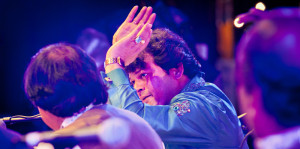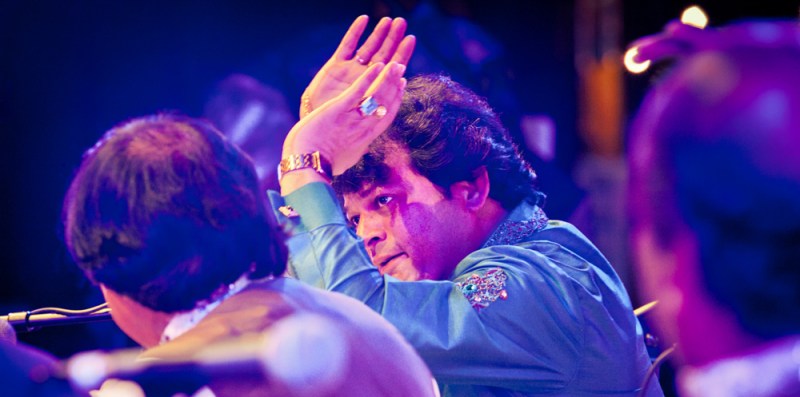
On Saturday night, Pakistani singer Asif Ali Khan and his group brought qawwali— a form of Sufi devotional music that has been in existence for more than 700 years, and that remains prevalent today in South Asia— to Bing Concert Hall.
In addition to Ali Khan, who served as lead vocalist, the concert featured his eight sons: Raza Hussein at the harmonium and choirs, Sarfraz Hussein at the harmonium and voice, Khawar Ali at the tablas, and everyone else as the ensemble of Choristers and Clappers.
Khan opened the concert with a performance of “Modimo” by Stanford Talisman. The piece questioned the idea of prayer as uniquely “closed eyes” and “clasped hands” and drew attention to its potential to be “thrilling, ecstatic and joyous.”
This concept perfectly melded with Ali Khan’s distinctive qawwali style, which rests upon a constant dialogue between the thrilling and the soothing. The musicians alternated between still, soulful cadences and full-throated, spiraling rhythms and vocals. The result was a fluid evening that crested and dipped like a wave before peacefully coming to shore.
The concert continued with a popular rendition of “Allah Hoo,” which set up the Sufi themes of divine love, its numerous manifestations, and yearning for communion. The group also played the ubiquitous “Mast Kalandar” and “Mer Piya Ghar Aaya.”
The performances of the qawwalis involved variations of rhythm and speed over the same couplet, which drew attention to the dexterity of both the vocalists and the instrumentalists. The sustained range of the vocals was impressive, eliciting rapturous applause from the audience on numerous occasions.
At the end, the group invited the audience to stand up and participate through clapping and singing. By popular demand, the concert extended over the hour-and-a-half mark, with a reprisal of “Mast Kalandar” accompanied by the audience. The most enthusiastic audience members came down to form a half-circle around the musicians, dancing, clapping and laying down money notes on the stage in the traditional form of appreciation.
Contact Nikhita Obeegado at nix19 “at” stanford.edu
